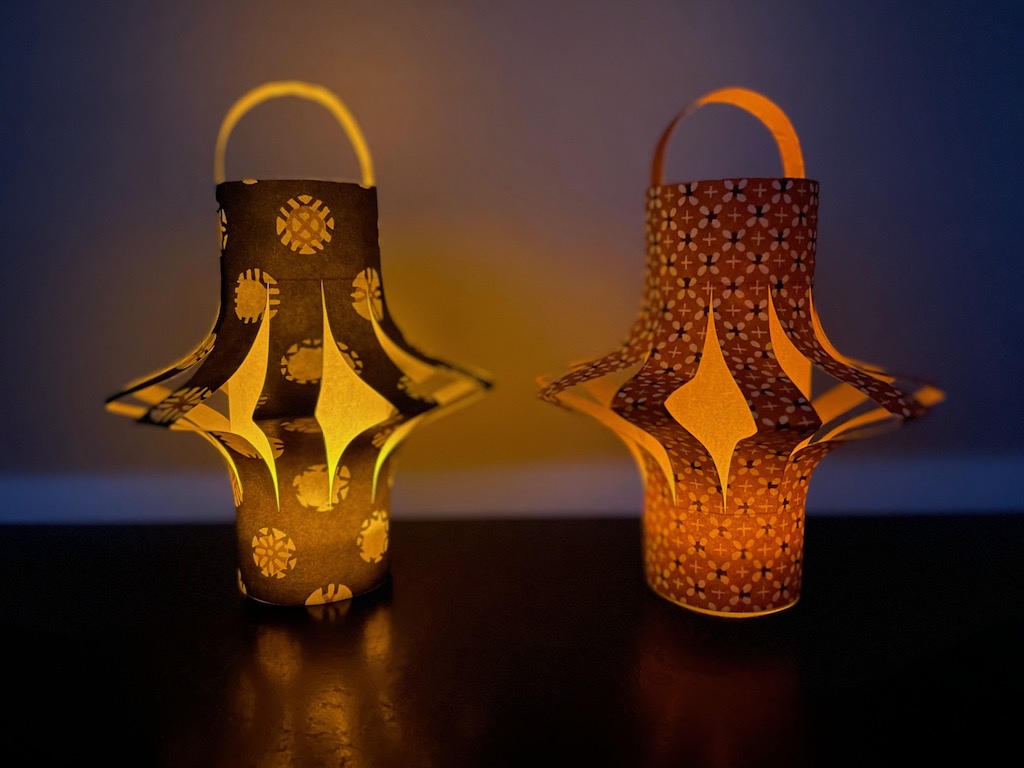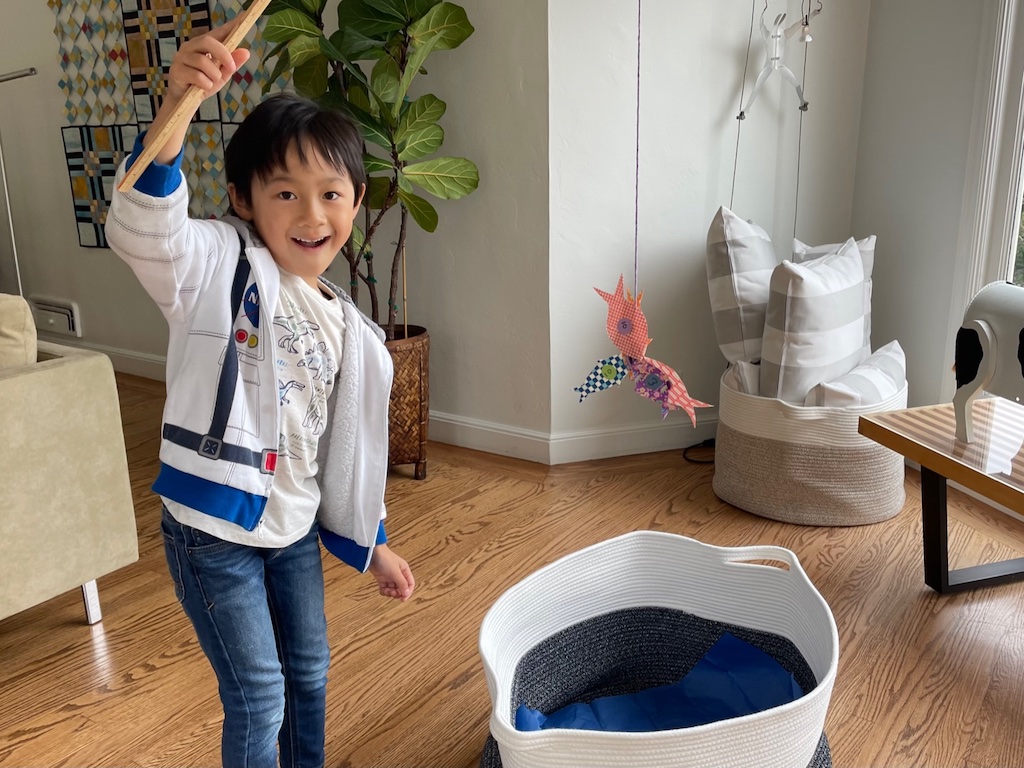How to Make Get-Well-Quick Origami Cranes
Miss T spent Saturday making two strings of get-well-quick origami cranes for her dad, who was recovering from outpatient surgery. The idea was suggested by her uncle, who has made hundred of these over the years.
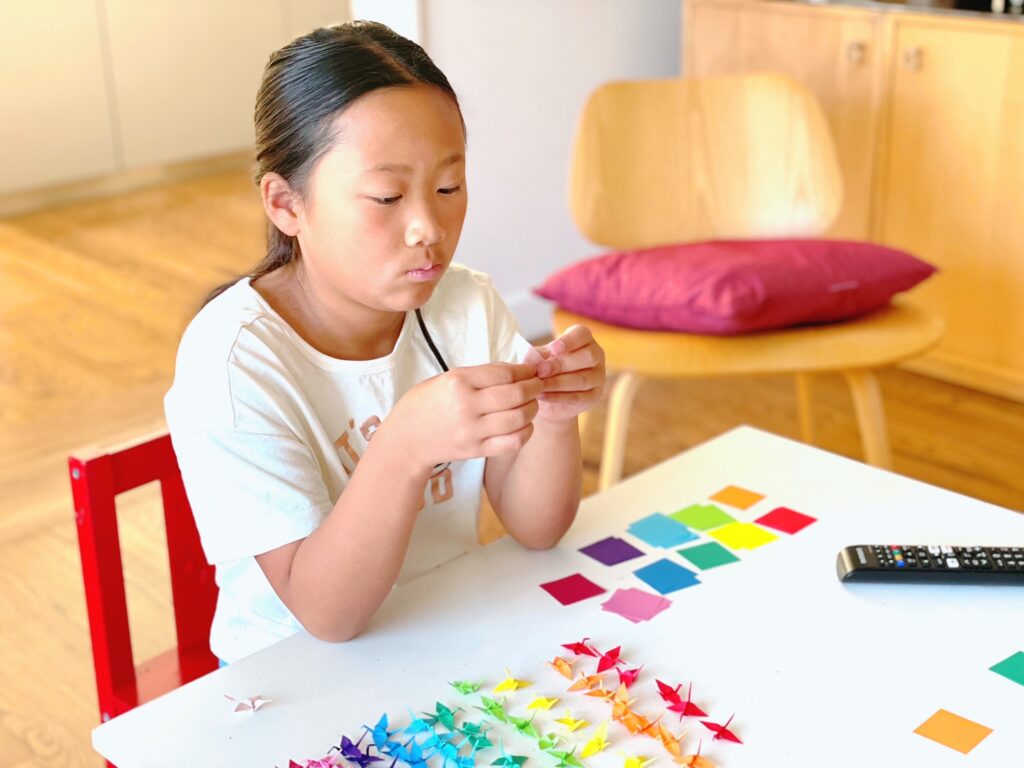
The Legend of the Origami Crane
Japanese legend says a crane can live for 1,000 years. If you fold an origami crane for each year of the crane’s life, you will be granted a wish. Thus, people have folded 1,000 cranes for weddings, hoping to ensure a long and happy marriage, and for hospital patients, so they will get better.
While she made nowhere near 1,000, Miss T was able to present her dad with a sizable string of mini origami cranes. He was touched and delighted by her efforts.
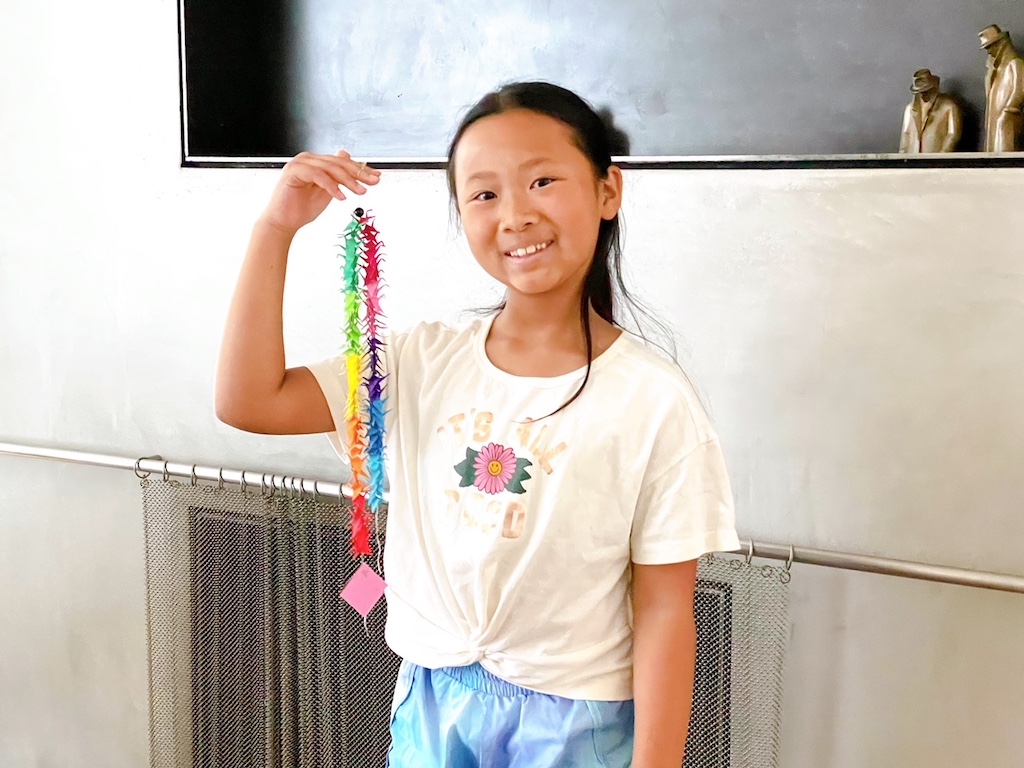
Making the Origami Cranes
Miss T used mini origami paper 4 centimeters (slightly larger than 1 1/2 inches) square, which requires true dexterity. I suggest going with the standard, 15 centimeter (nearly 6 inches), full-size version.
More to do with origami paper: Make Chinese paper lanterns.
Origami paper is fairly inexpensive and ubiquitous. You can buy packs of it at craft stores, from Amazon, Target, Walmart, and dollar stores, as well as from many stationery outlets and Japanese specialty paper purveyors.
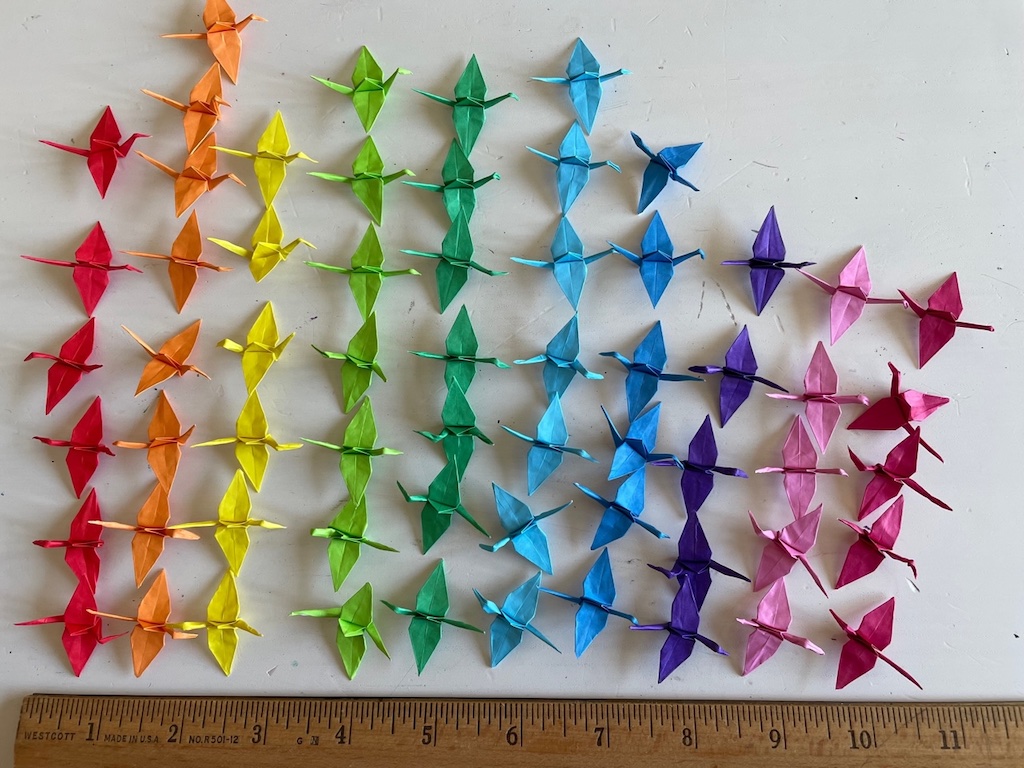
Making paper cranes is not one of the simpler origami projects, but it’s quite doable for children who can make a neat fold on paper. The important thing is to fold precisely from the start. Each fold is dependent on the fold before it, to turn out well.
More fun with origami paper: make fish for a fishing game.
For origami crane folding directions in writing, with step-by-step photos, try Skillshare.
If you prefer a video, try directions from the Japanese American National Museum. I like this demo because the instructions are clear and the video is quiet.
Stringing the Cranes into a Senbazuru
Senbazuru or a string of a thousand origami cranes, is usually made with solid color, 6-inch square origami paper. String 40 cranes per string and make 25 strings for 1,000 cranes.
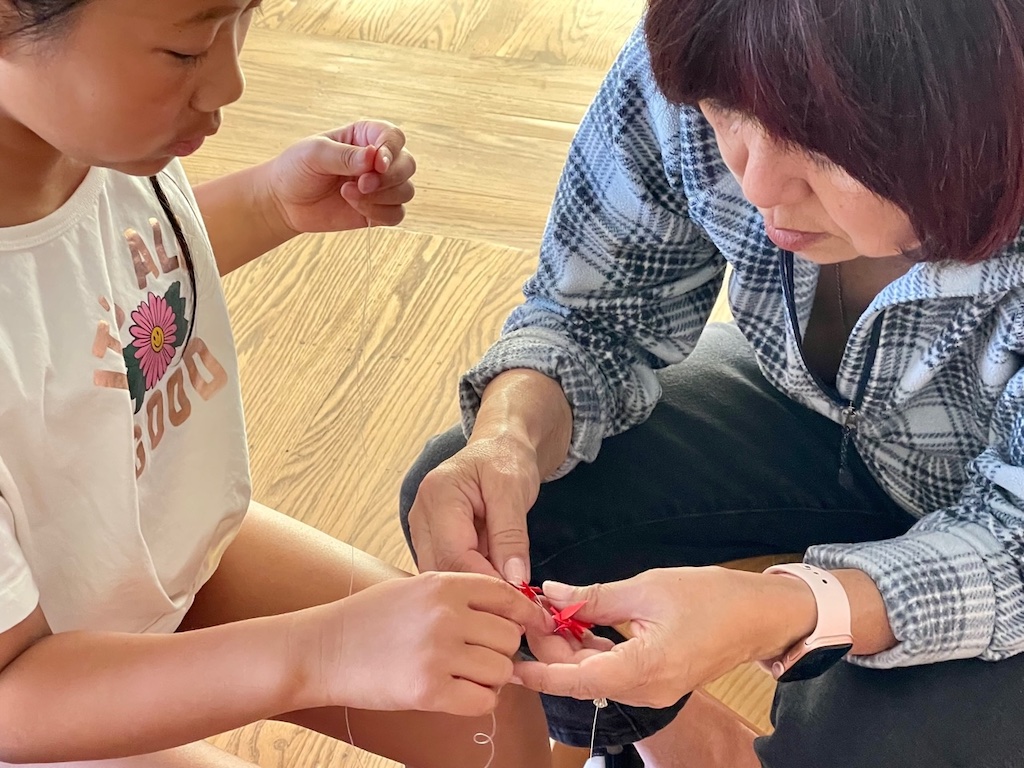
To string them, use strong thread or fishing line and a long needle. Do not use dental floss. The floss will abrade and get too fuzzy to use after awhile.
Two ways to string:
- Tie a bead at the end, then string the cranes starting at the hole in the bottom of the crane, up through the back of the crane. Keep stringing remaining cranes or add a bead between each.
- Or you can do what I did. Bring the needle up the through underside hole in the crane and take a stitch to hold the crane in place. Here’s a video demo.
- Be sure to leave some string at the top after stringing your last crane, so you have room to tie your crane strings together. Tie to a ring or bead or make a thread loop for hanging.
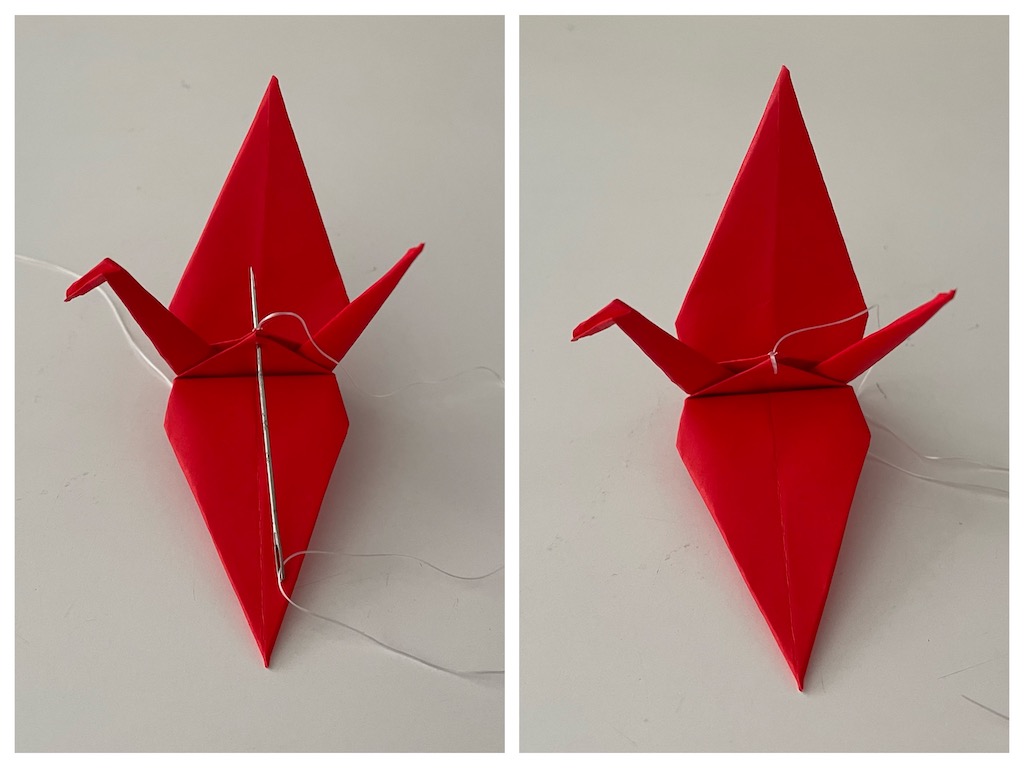
To join our two strings of cranes together, we threaded both strands through a bead. Then we knotted the strands to keep the bead in place. Finally, we made a loop with the excess string.
How to use Origami Cranes
Making origami cranes is a fun and fascinating activity and there are many uses for them. You don’t have to make a thousand cranes to give your cranes purpose.
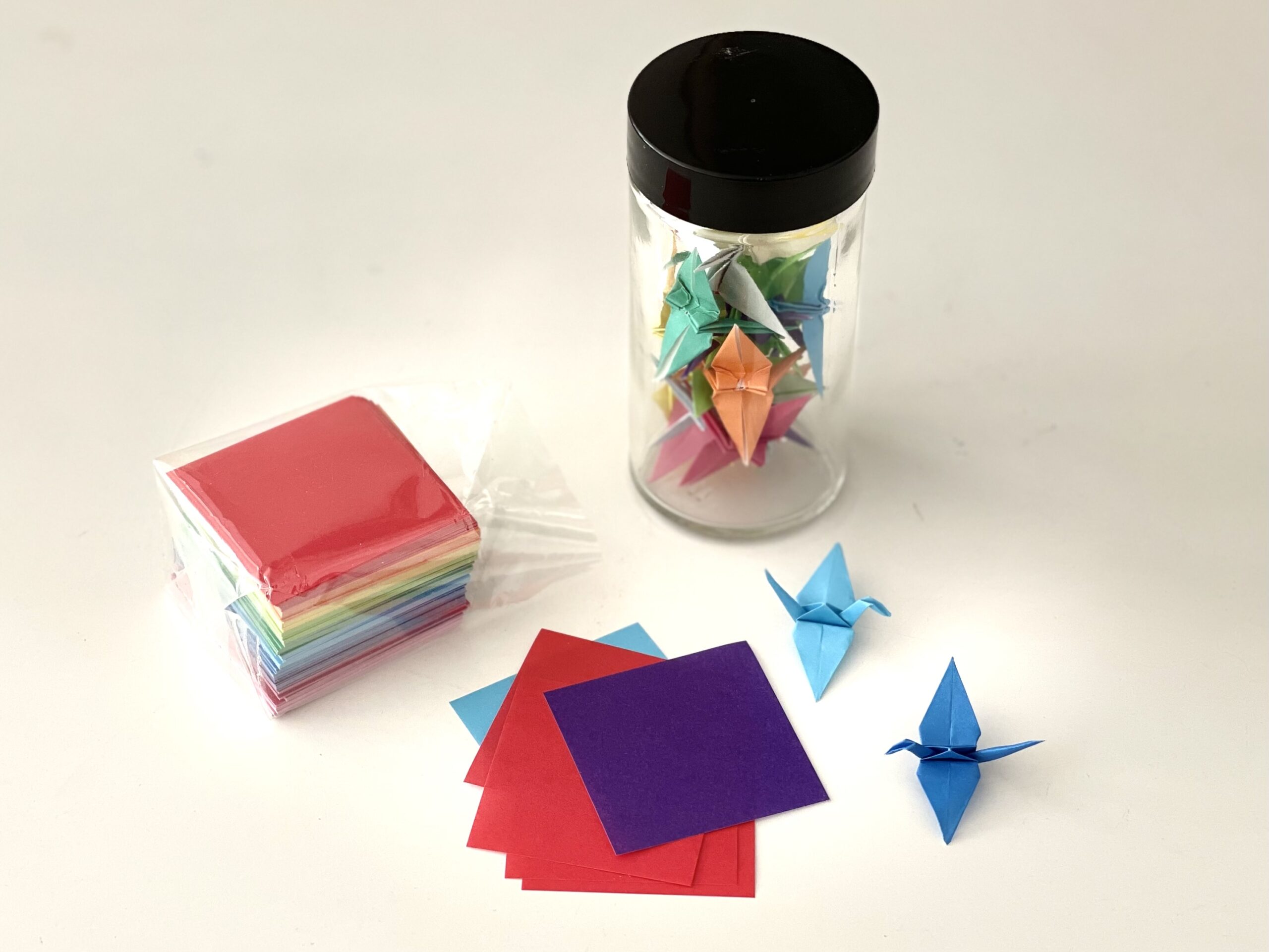
- Instead of sending a get-well card, fold a crane and tuck it in an envelope with your get-well message. Or, make a string of origami cranes and hang them from a lamp next to the patient’s hospital bed to add some cheer.
- Use an origami crane to decorate a small gift package, instead of a bow.
- Make individual cranes to use as ornaments on a Christmas tree.
- Hang a string of cranes from a light fixture in a child’s room.
- Arrange a dry branch in a vase and hang with cranes in winter when garden flowers are scarce.
- Make mini origami cranes and arrange in a spice jar as a desk ornament, as my son did for me.
- Or–and this is a beautiful, meaningful project–fold a thousand cranes with your children or grandchildren who are old enough to understand the importance of world peace. String the cranes into a senbazuru to send to the Hiroshima Peace Memorial Park in Japan. Here’s how to send your cranes.
Sadako and the Thousand Paper Cranes
Many kids read Sadako and the Thousand Paper Cranes in school in the 70s, so you may already know this poignant story. Sadako Sasaki was just two years old when the atomic bomb was dropped on Hiroshima.
She contracted leukemia from the deadly dose of radiation. Sadako tried to fold 1,000 origami cranes in hopes of getting better. She died in 1955 at age 12, but her spirit lives on.
To this day, people and organizations around the world continue to send strings of 1,000 origami cranes to the Hiroshima Peace Memorial Park in memory of Sadako.
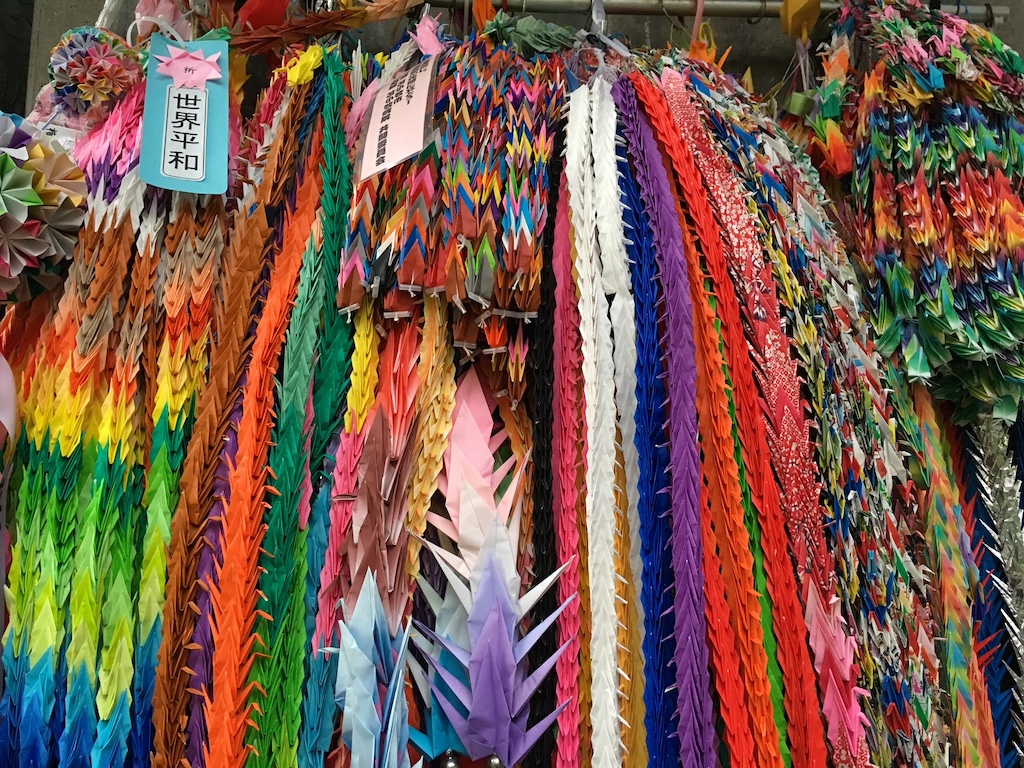
Visiting the Hiroshima Peace Memorial Park is a powerful, profoundly emotional experience. At the Children’s Peace Monument, honoring all the children killed by the bomb, you’ll find a statue of Sadako on top. She is holding a crane.
Thousands of senbazuru, are displayed below the statue. They are protected in acrylic boxes.
The strings of cranes are registered in the City of Hiroshima’s paper crane database. The city records what school, organization, or individual sent the cranes, where they are from, and how many were sent.
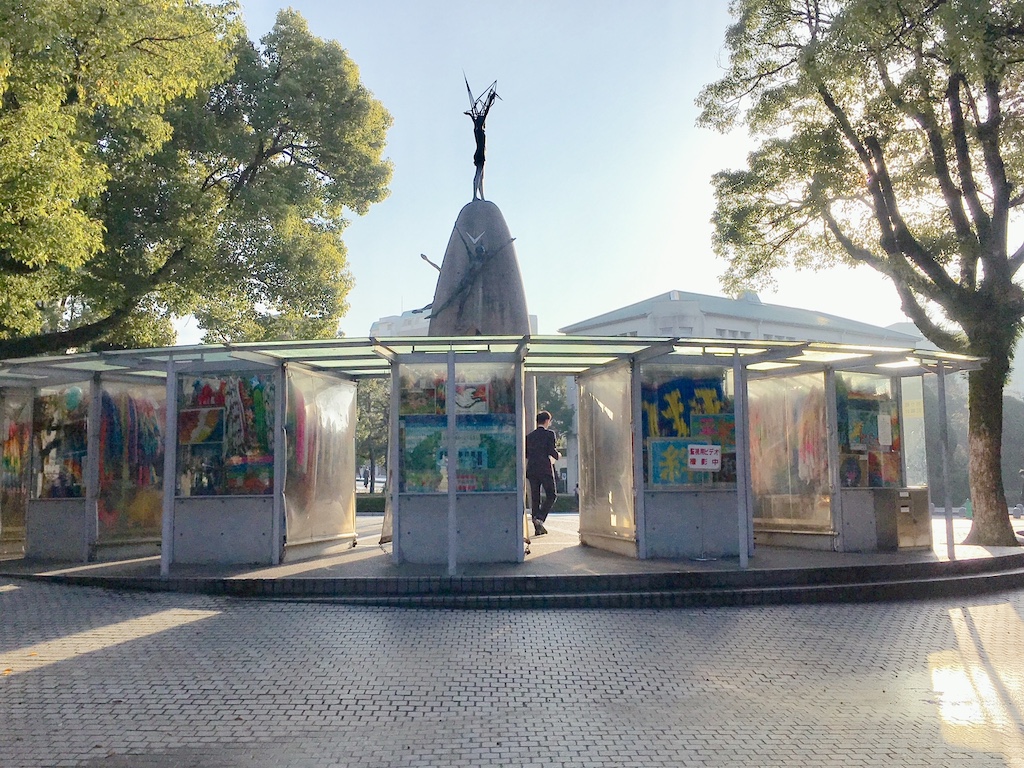
You’ll find more strings of origami cranes displayed in other parts of the park, including at the Memorial Tower to Mobilized Students. The memorial honors children as young as 12 who were mobilized to help in the war effort. At the time of the bombing, they died clearing debris from previous bombings.
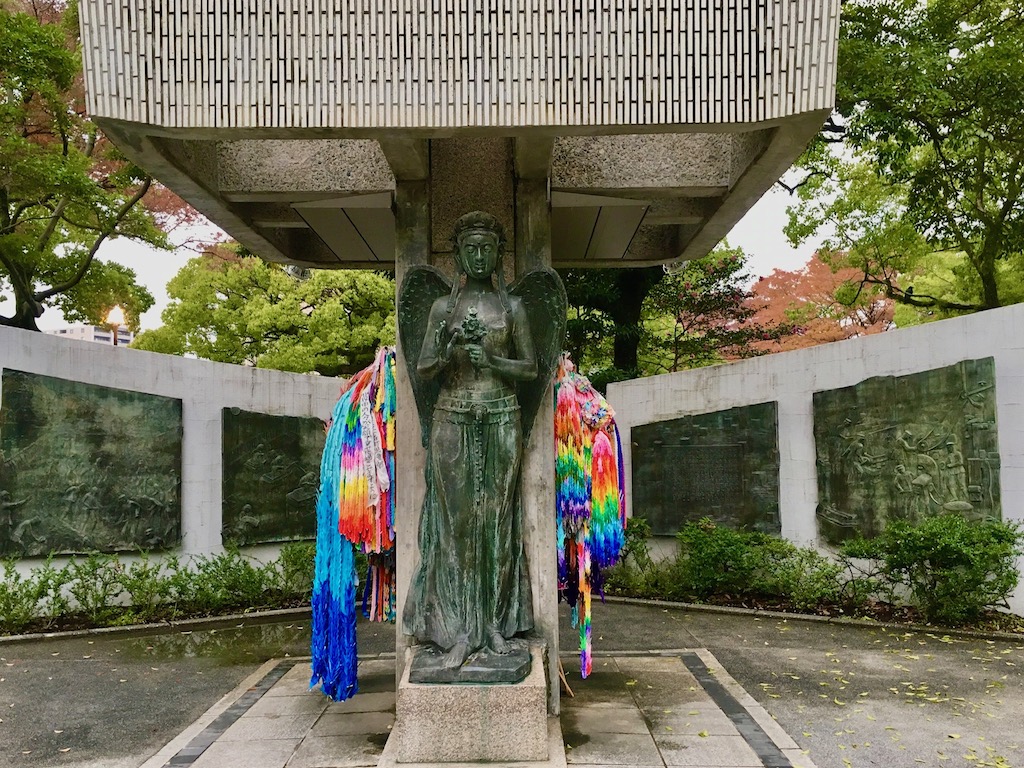
Sign Up!
Don’t forget to sign up for my email newsletter. Every Wednesday, I’ll give you a new idea for an activity or insight to nurture the little ones in your life.
